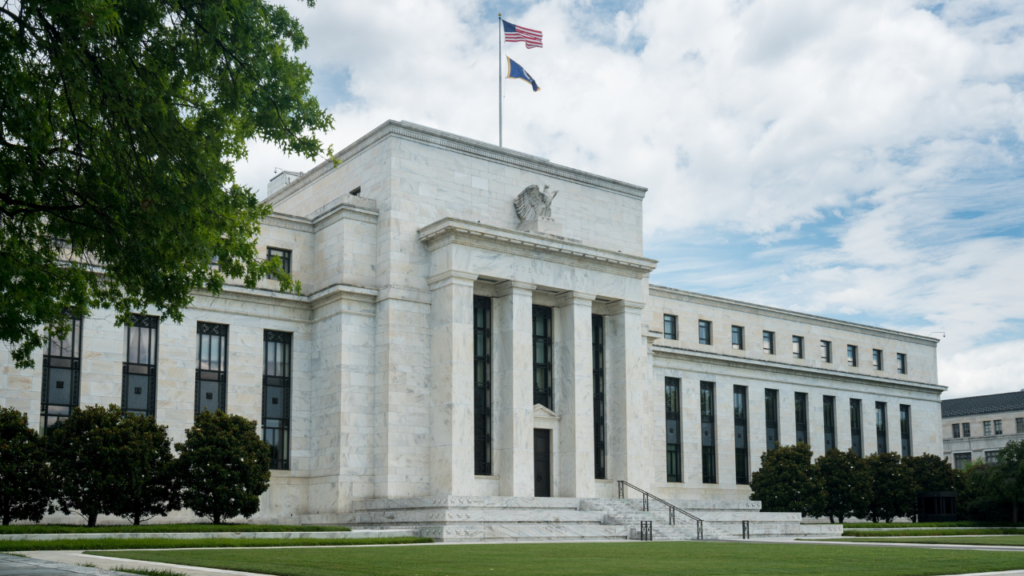Originally published at Project-Syndicate | Feb 5th, 2024
The US Federal Reserve has clearly signaled that it is in no hurry to align its policy interest rate with the presumed value of the neutral rate, where monetary policy is neither stimulative nor restrictive. But with the macroeconomy already in balance, what justifies the Fed’s reluctance?
BERKELEY – At its monthly meeting on January 31, the Federal Reserve’s Federal Open Market Committee held firm on interest rates. “The Committee judges that the risks to achieving its employment and inflation goals are moving into better balance,” the FOMC explained in its press release. But the “economic outlook is uncertain, and the Committee remains highly attentive to inflation risks.” As a result, “[t]he Committee does not expect it will be appropriate to reduce the target range until it has gained greater confidence that inflation is moving sustainably toward 2 percent.”
I must say, this announcement left me somewhat alarmed, particularly the parts about keeping the target range for the federal funds rate at 5.25-5.5%. After all, the US macroeconomy is already moving forward at a sustainable cruising speed. It is in balance, with an unemployment rate of 3.7%, implying “full employment.” The core personal consumption expenditures (PCE) index (excluding food and energy) over the past six months shows that inflation has fallen steadily toward the Fed’s target.
Moreover, I see no significant private-sector forces at work that would imminently strengthen demand by enough to boost inflation, or that would push the economy into recession. And neither does anybody else.
True, a few commentators still worry that the somewhat elevated state of the Beveridge curve (reflecting the relationship between job vacancies and the unemployment rate) indicates the potential for growing wage-inflation pressures. But to harbor such fears, one must pretend that job-vacancy postings in the digital age mean the same thing as they did in the past. Before widespread adoption of the internet, employers had to spend money to advertise vacancies and then interview those who responded. Now, firms can post vacancies for free and reject applicants with ease. And since job applications are usually sent to a mass audience, a rejection today does not amount to a negative signal that would impede a firm-worker match in the future.
With these changes, it would be astonishing if the current Beveridge employment-vacancy relationship was anything like previous cycles. Those who have attempted to forecast with an estimated slope for the Beveridge curve have missed the mark massively.
There also may be some commentators who worry that rising real (inflation-adjusted) wages are jeopardizing macroeconomic stability. But just as margins cannot expand forever, labor’s share of income cannot fall forever. After a generation of capital’s share of income rising at labor’s expense, we should expect a shift in the other direction, especially as some of the factors that boosted capital’s bargaining power have ebbed.
Moreover, one must consider productivity growth, which counteracts the inflationary effects of wage growth. A high-pressure full-employment economy tends to deliver higher productivity growth, because businesses find that training workers and investing in their productivity is an attractive option compared to fishing in a shallower pool of potential hires. This effect was evident in the latest US Bureau of Labor Statistics report, according to which annualized nonfarm-business productivity grew by 3.2% in the fourth quarter of 2023, capping off a 2.7% year-on-year increase.
Thus, neither the Beveridge curve nor real-wage increases offer a reliable foundation for forecasting a rebound of inflation. Still, looming over the Fed’s deliberations is the zero lower bound: the Fed can always raise interest rates, but it cannot cut them below zero. This asymmetry thus imposes a strategic constraint on monetary policy. The last thing the Fed wants is to find itself in a situation where it might have to cut its policy rate to zero.
But this risk must be weighed against the presumption that in a balanced, neutral economy like the current one, monetary policy, too, should be neutral. That means setting interest rates at their long-run neutral level: the shadowy, mysterious variable r*, at which monetary policy is neither stimulative nor restrictive.
I seriously doubt that even a small handful of FOMC members believe that today’s r* corresponds to a policy rate in the range 5.25-5.5%. If I am right, that means most members recognize that current policy is not neutral but restrictive. And yet, the latest announcement carried a strong message that the FOMC is in no hurry to align policy rates with the presumed value of the neutral rate r*.
That concerns me, and it should concern us all. What is the thinking – about current inflation pressures, r*, and the likely distribution of future supply and demand shocks – that justifies such a reluctance to move policy rates back toward a neutral level? When a boat is already pointed at its destination, its tiller should be straight, not hard-a-starboard.
J. Bradford DeLong: Professor of Economics at the University of California, Berkeley, is a research associate at the National Bureau of Economic Research and the author of Slouching Towards Utopia: An Economic History of the Twentieth Century (Basic Books, 2022). He was Deputy Assistant US Treasury Secretary during the Clinton Administration, where he was heavily involved in budget and trade negotiations. His role in designing the bailout of Mexico during the 1994 peso crisis placed him at the forefront of Latin America’s transformation into a region of open economies, and cemented his stature as a leading voice in economic-policy debates.
